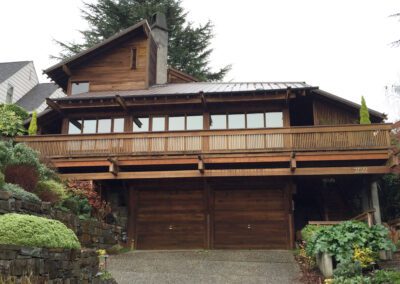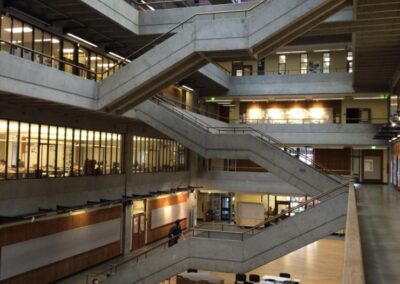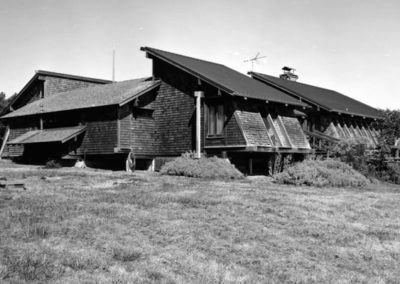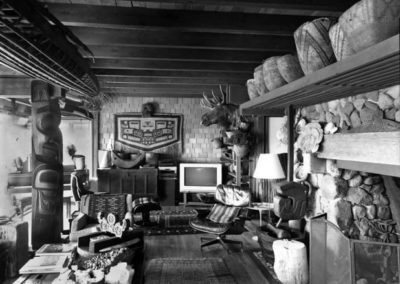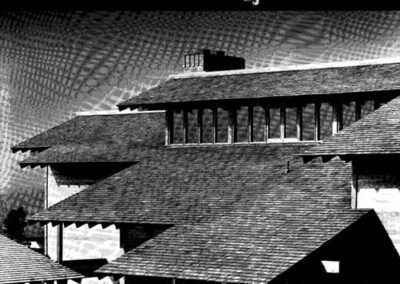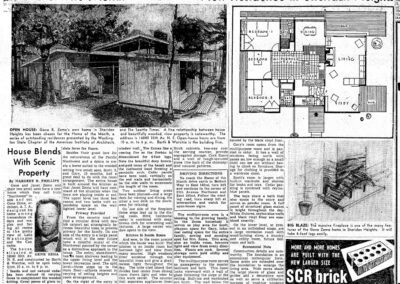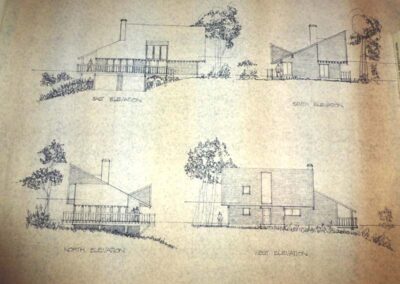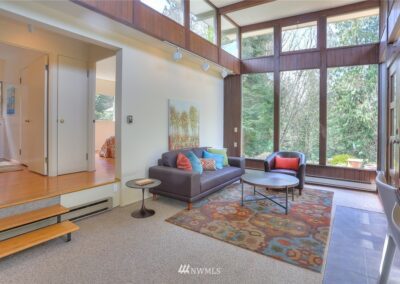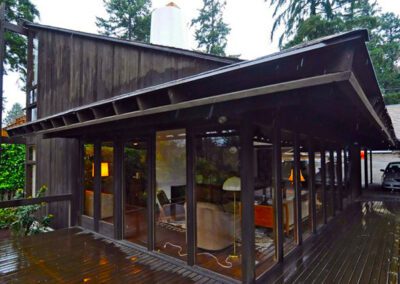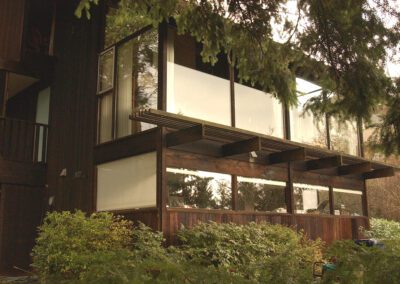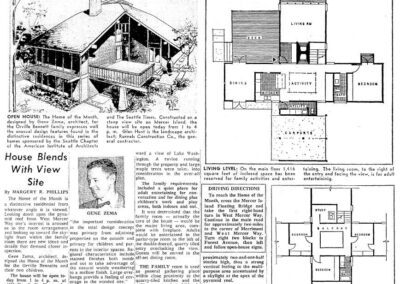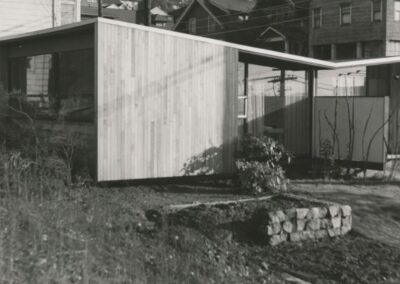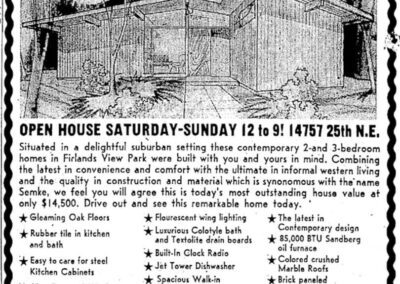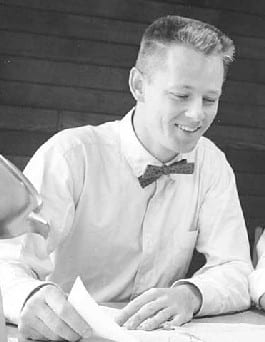
Zema, Gene
(1926 – 2021)
A Modular Approach
Gould Hall Collaboration
Ideal Practice
Influences
Salvaged Materials
The Carpenter
The Collector
Whidbey Kitchen
Gene Zema was born on September 2, 1926 and grew up on a farm in the Sacramento Valley in California. He began studies at the University of Washington in 1944. Although he initially studied Engineering, he changed his course of program to Architecture after returning to school from service in the Navy during World War II. He completed his Bachelor of Architecture degree at the University of Washington in 1950.
Zema received his architectural license in 1951 and joined the AIA that same year. He worked for a variety of architectural firms before opening his own practice in 1953. Located in Seattle’s Eastlake neighborhood (200 East Boston), the office was a strong testament to the skills of the young designer and helped him receive many notable architectural commissions over the next 30 years. Zema shared this office with A.O. Bumgardner, and they formed a partnership to work on larger projects. They each maintained their private residential practices during this time and the partnership lasted only a few years. As partners, the two were invited in 1955 to produce a prototypical residential design for the Grand Rapids (MI) Homestyle Center exhibit featuring nationally known architects. Their design represented a “budget house for…the Pacific Northwest utilizing natural materials.” In the early 1950s, Zema had designed a number of standard builder’s plans for the development of Bridle Trails Park in Bellevue, WA, which were very similar to the Homestyle Center model he designed later with Bumgardner.
Zema holds the distinction of receiving the first Seattle AIA Home of the Year award in 1955 for his own dwelling completed in 1954 (16040 35th NE, Sheridan Heights). Other award-winning homes were the Holm residence in Richmond Beach (built 1956, AIA honor award 1962), and the Lupton residence (1961) on Mercer Island, which was awarded both a Home of the Year award in 1961 and an Honor Award in 1962. Other notable residential buildings in and around Seattle included the Stephen House (1967) and his own home in Laurelhurst (1965).
Zema’s residential and non-residential projects were heavily influenced by the work of Paul Hayden Kirk. Zema especially drew direct inspiration from Kirk’s “how-to” book about clinic design (Doctors’ Offices and Clinics, 1955) for the eight medical and/or dental clinics he designed. These included the Jefferson Park Medical Clinic (1957) on Beacon Hill, the Rice Dental Clinic (1961) in north Seattle, and the Overlake Park Clinic (1963-65) in Bellevue.
His other non-residential projects also include the Wells-Medina Nursery (1968) and Gould Hall at the University of Washington (with Dan Streissguth, 1972). Zema had opened a Japanese antiquities gallery in his office in 1968, which remained in operation through the 1990s (under different ownership). Zema retired from practice in 1976 and built a third home for his family on Whidbey Island in 1983. He and his wife Janet were married for 67 years until her death in 2018. Gene Zema passed away in his Whidbey Island home on October 9, 2021 at the age of 95.
Obituary (Seattle Times)
– Beth Dodrill (with updates by Docomomo US/WEWA)
Oral History Project: Gene Zema participated in Docomomo US/WEWA’s oral history project. He was interviewed in July 2008. A complete transcript can be downloaded on the left sidebar. Segments from the interview can be heard by clicking the audio files on the left sidebar of this page. Photographs in the gallery below were taken by John Stamets for Docomomo US/WEWA in 2008. The Stamets Photography Collection was donated to the University of Washington Special Collections.
Advertisement for Red Cedar Shingles Featuring Zema Designed House | Bellevue
Source: Progressive Architect, June 1963
